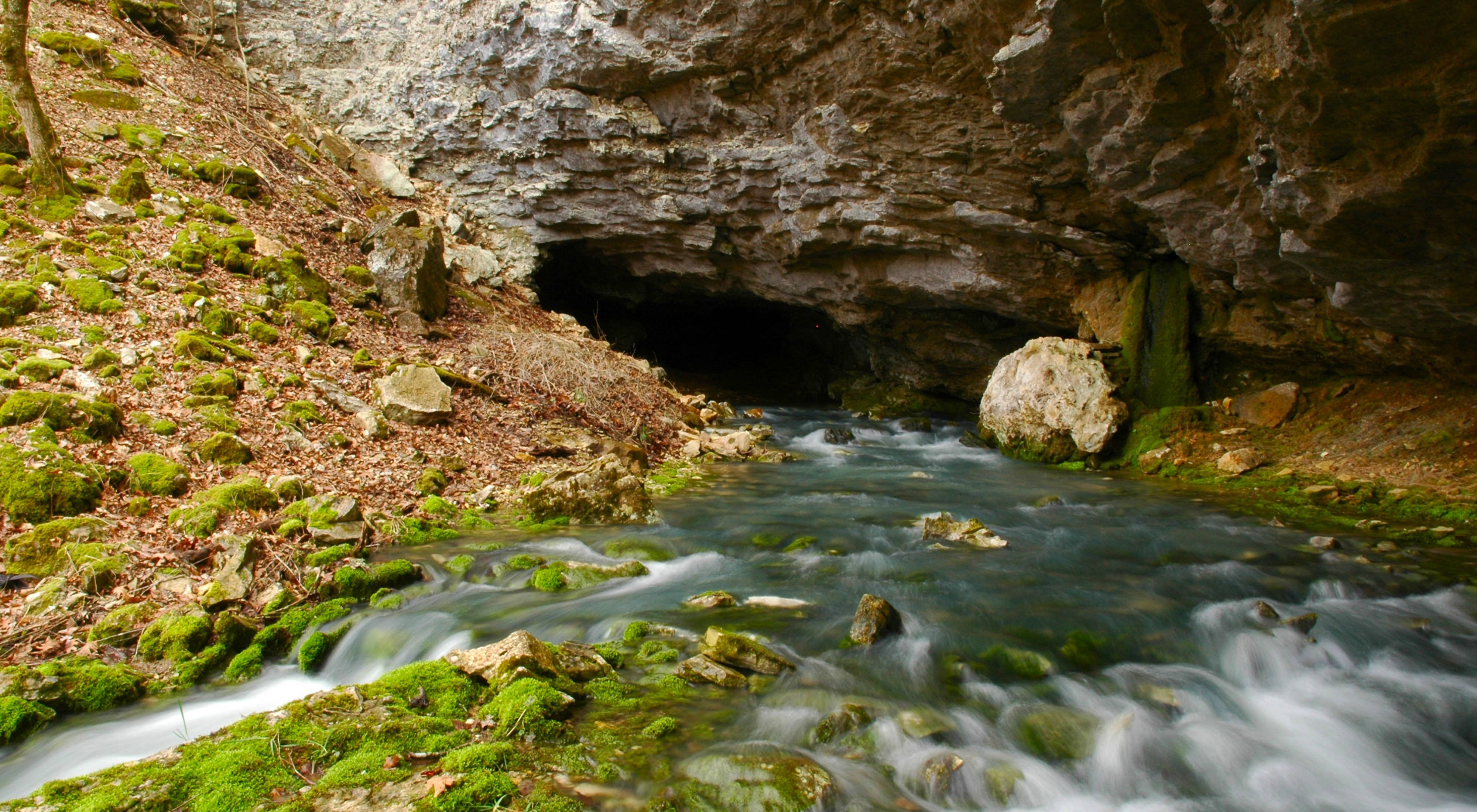This amazing underground landscape harbors at least 60 species found nowhere else on Earth.
Ecologial Significance
The Ozark karst ecosystem is an underground wilderness of caves, springs and aquifers that over the millennia have formed in the carbonate bedrock of the Ozark Highlands. Stretching from northern Arkansas and southern Missouri and into eastern Oklahoma, this amazing underground landscape harbors bats, salamanders, fish, crustaceans and other invertebrates, including at least 60 species found nowhere else on Earth. Because they have such limited home ranges, most Ozark karst species are considered globally imperiled, though only seven are listed for protection under the U.S. Endangered Species Act. This landscape is also a precious groundwater source; safeguarding the subterranean ecosystem means safeguarding drinking water for humans and keeping the water that feeds beautiful Ozark streams clear and clean.
Threats
The porous and fractured nature of karst terrain makes it very susceptible to pollution. After rains, runoff from streams and the ground can enter aquifers quickly, transporting unfiltered contaminants that pollute groundwater and threaten aquatic karst animals. This ecosystem’s sensitivity is complicated by the fact that northwest Arkansas is one of the fastest-growing metropolitan areas in the United States. Residential and industrial developments have been built or are planned in the watersheds—or even directly on top—of fragile underground ecosystems. Incompatible agricultural activities as well as careless fertilizer, gas and oil, and household chemical uses or disposals can pose threats. And the animals that live in the caves are threatened by incompatible (oftentimes illegal) entries and vandalism.
What We've Done
Since 1978 the Conservancy has acquired 20 caves, installed or repaired two dozen cave gates, and removed 230 tons of garbage near caves or sinkholes. A prime example of the Conservancy’s karst work is at Smith Creek, which flows over one of the largest caves in Arkansas and is a tributary to the Buffalo National River. The Conservancy purchased 1,316 acres above the cave, which is home to the state’s largest hibernating colony of endangered Indiana bats, to create Smith Creek Preserve. A protection agreement on adjacent property that harbors the cave’s main entrance limits potentially fatal disruptions to the bats during hibernation. Smith Creek also connects the Ozark National Forest and the Buffalo National River Wilderness Area, protecting a forested corridor for gray bats, black bears and elk, as well as critical foraging and roosting sites for the Indiana bats.
To give city planners and developers the means to avoid sensitive karst areas or plan developments in ways that won’t harm groundwater or karst species, the Conservancy used data gathered from years of research to create a map depicting Northwest Arkansas in terms of most sensitive to least sensitive to groundwater pollution. Having specific information about karst areas prompted three developers to donate to the Arkansas Natural Heritage Commission 80 acres located directly above Cave Springs Cave, which harbors gray bats and the largest known population of the extremely rare Ozark cavefish. While the land was quite valuable from a development perspective, the donors received tax incentives, and the value of the surrounding lots increased, particularly those adjacent to the green spaces.
Ongoing Conservation Actions
With its partners, the karst program continues to monitor rare species and water quality at more than 200 karst sites throughout the Ozarks. To date, program scientists have had a hand in discovering more than 20 species new to science. The program continually builds on the knowledge of karst features in Arkansas to refine conservation actions; the team recently worked with the U.S. Fish and Wildlife Service to delineate the above-ground boundaries of Benton County’s Logan Cave, which is home to the largest population of endangered Benton cave crayfish as well as Ozark cavefish and some 30,000 gray bats. The program also helps local governments develop plans for hazardous material spills and shares information about the proper disposal of chemicals. On a larger scale, the Conservancy works with developers and farmers to create management plans that reduce impacts on the precious landscape below ground.
In 2016 Arkansas hosted for the International Conference on Subterranian Biology for a second time, drawing international karst researchers who specialize in subterranean conservation. The Arkansas program remains active in ongoing technical exchanges to benefit karst conservation worldwide.

